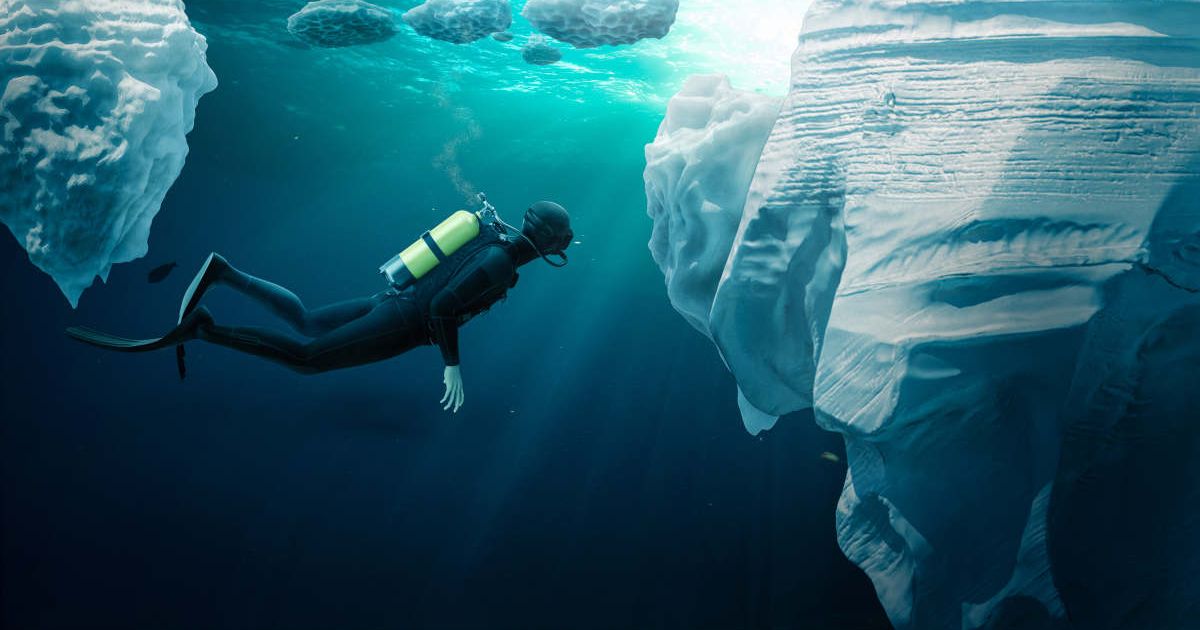Massive Antarctic Iceberg Breaks Away, Revealing More Than 1,000 Nests Made by Unexpected Creatures

Antarctica's western Weddell Sea once had a less-discovered area that's now become a major topic of discussion in the scientific world. The remote region, once hidden beneath a 200-meter-thick ice shelf, just gave scientists a new and unusual creation to marvel at. In a study published in the journal Frontiers in Marine Science, scientists scoured the area and found complex and intricately designed fish nesting grounds. The unusual discovery was made thanks to the A68 iceberg, a 5,800 square kilometers broad chunk of ice which broke and calved from Larsen C Ice Shelf in 2017, reshaping the Antarctic landscape.

As a result, scientists discovered a previously undiscovered area underwater where a remotely operated vehicle (ROV) or underwater robot can be sent. They explored Antarctica's sea floor and found more than 1,000 circular nests. Each of these structures did not have a layer of plankton detritus covering them, which was otherwise found in the rest of the seafloor. These nests were aligned in a unique pattern and weren't scattered like one would presume.

There were dents in some areas of the seafloor, and each indicates the presence of fish nests. The most fascinating part about this discovery is the unique patterns shown. Some nests are together in a cluster, while some are completely single and isolated. Irrelevant of its shape, all have been cleared of the phytoplankton detritus layer that once occupied these areas. In 2019, the Weddell Sea Expedition 2019 was conducted in the region that was formed after the iceberg broke off. The research started with two clear aims.
One aim was to explore the waters surrounding the Larsen C Ice Shelf through an interdisciplinary scientific program, and the other aim was to locate and analyze the wreck of Sir Ernest Shackleton's ship called the Endurance, which sank in 1915. The expedition carried the weight of both scientific and historical discovery, and the mission was indeed a challenging one. The shipwreck wasn't found in that expedition, but the experience gave necessary data that smoothed the subsequent Endurance22 expedition, which successfully located the wreck 3,008 meters below the sea level.

The 2019 study also focused on analyzing how the floating ice shelves help stabilize the Antarctic glaciers and the role they play in global sea level rise. As for the unusual nests discovered on the sea floor, scientists discovered that the species of rockcod, called yellowfin notie, was behind these constructions. Each nest was protected by a parent fish who was guarding the eggs from predators. These dense clusters formed by these fish could have been effective in protection. This unusual system brings the "selfish herd" story to light.

The theory comes from the behavioral pattern of living beings, where they form clusters to protect themselves, and those stuck in the middle of these dense clusters are the safest compared to others. Then what about the nests that are built in isolation? Scientists believe that bigger and stronger fish protected these nests single-handedly. Either way, this structure highlights the beautiful interplay and co-dependency within a community while showing the contradictory nature of cooperation and self-preservation.
More on Green Matters
Here's What Happens When the Seafloor Spreads, and Why It Can Cause Earthquakes
Antarctica Is 'Greening' Thanks to Climate Change: What That Means